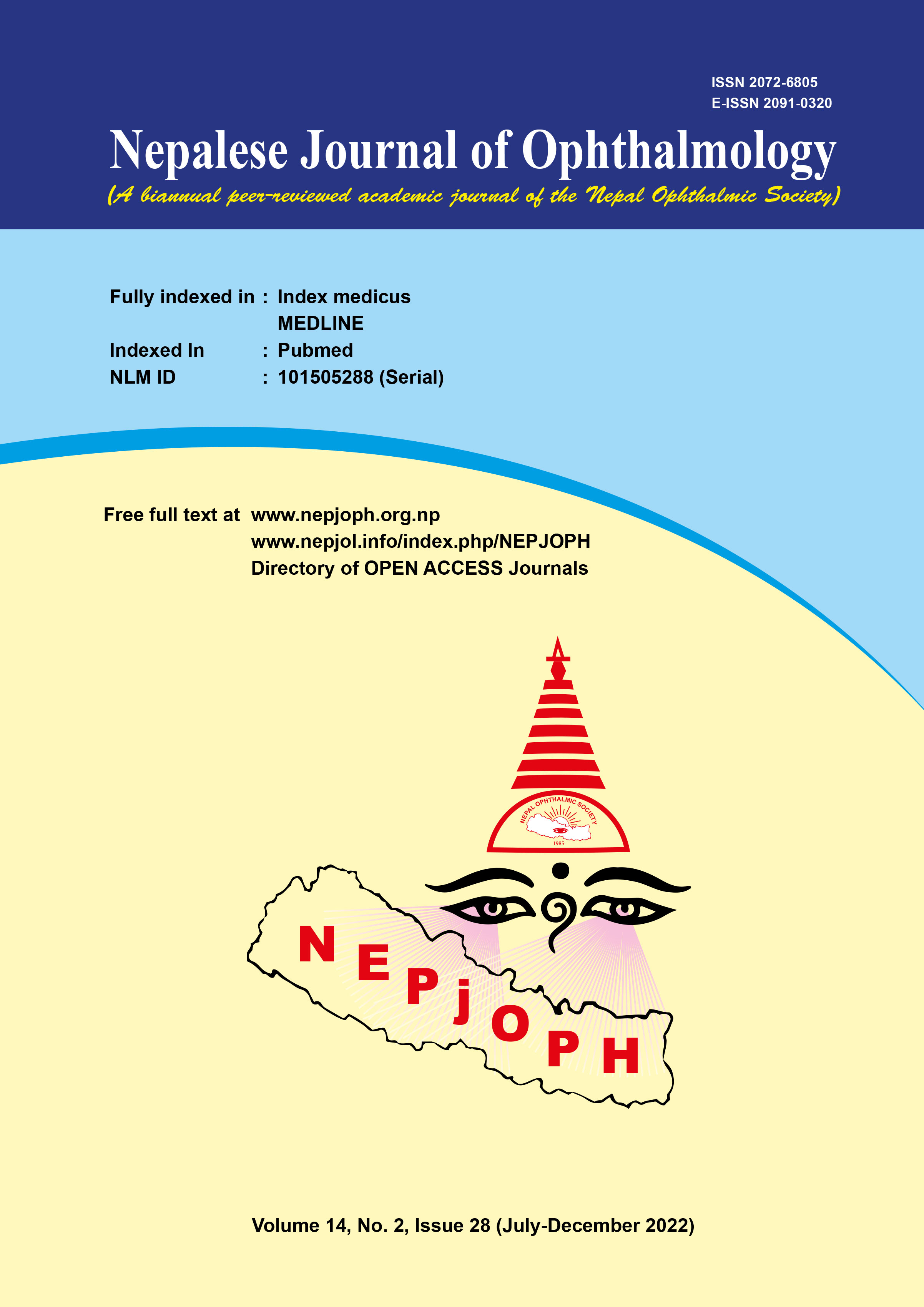Conjunctival swab positivity and conjunctivitis in SARS-COV-2 in a tertiary care center of Western Odisha
DOI:
https://doi.org/10.3126/nepjoph.v14i2.43169Keywords:
Conjunctival swab, Conjunctivitis, COVID-19, RT-PCR test, SARS CoV-2Abstract
Introduction: The principal route of transmission of severe acute respiratory syndrome coronavirus-2 (SARS-COV-2) is respiratory droplets. Reverse transcription-polymerase chain reaction (RT-PCR) test of throat swabs, nasopharyngeal swabs, sputum, endotracheal aspirates and bronchoalveolar lavage is the diagnostic test of severe acute respiratory syndrome coronavirus-2. Since the epithelium of the conjunctiva contains angiotensin-converting enzyme-2 receptors, the presence of the severe acute respiratory syndrome coronavirus-2 in conjunctival secretion can be expected. The present study is designed to detect severe acute respiratory syndrome coronavirus-2 from conjunctival secretions and the prevalence of conjunctivitis in laboratory-confirmed CoronaVirus disease-19 (COVID-19) patients.
Materials and methods: This is a prospective observational study carried out in a tertiary care hospital in western Odisha, India from September 2020 to November 2020 during the first wave of CoronaVirus disease-19. One hundred and thirteen laboratory-confirmed CoronaVirus disease-19 positive patients either by reverse transcription-polymerase chain reaction or Rapid antigen test (RAT) from nasopharyngeal swabs were included. Conjunctival swabs were collected from all these patients with proper precautionary measures and sent for reverse transcription-polymerase chain reaction test. Any signs of conjunctivitis at any stage of the illness were observed in all the patients.
Results: Out of 113 samples, reverse transcription-polymerase chain reaction test of the conjunctival swab was found to be positive in three patients (2.65%). The mean cycle threshold (CT) value of these three swabs was 27.16. No signs of conjunctivitis were found in any of these patients. Diabetes and hypertension were associated comorbidities in one patient.
Conclusion: The absence of conjunctivitis despite the presence of virus in the conjunctival swab gives a message to the ophthalmologists to take precautionary measures during a routine eye examination.
Downloads
Downloads
Published
How to Cite
Issue
Section
License
Copyright (c) 2022 Nepalese Journal of Ophthalmology

This work is licensed under a Creative Commons Attribution-NonCommercial-NoDerivatives 4.0 International License.
This license enables reusers to copy and distribute the material in any medium or format in unadapted form only, for noncommercial purposes only, and only so long as attribution is given to the creator.




